Fire is essential for survival in the wilderness. It’s an excellent tool for food preparation, warmth, and comfort. Unfortunately, starting a fire can be difficult if you don’t have a lighter. However, if you know how to make and use your gel fuel, you may be in luck!
There are many options for creating fire without a lighter, but gel fuel is our favorite option. DIY gel fuel will save you money and allow you to create a fire in the backcountry or your fireplace.
This post explains what gel fuel is, and several methods for making your own.
Table of contents
Gel fuels 101
Gel fuel is very popular because it’s easy to make and can be stored for an extended period of time. In addition, it is an alcohol-based product that doesn’t smoke or produce hazardous noxious fumes.
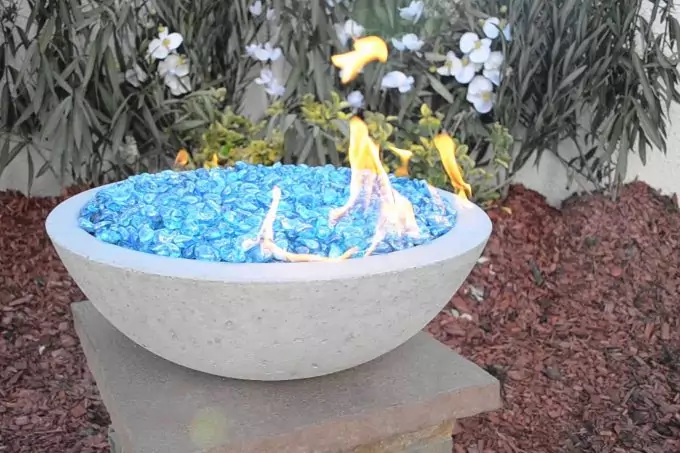
If you’re interested in gel fuel, you can purchase a commercial container at a camping store.
However, this article will tell you how to make your gel fuel so that you have a steady and reliable source no matter what happens. Furthermore, it’s not difficult to create the fuel, as you won’t need any fancy equipment, special tools, or hard-to-find ingredients.
DIY Gel Fuel Recipes
There are several different ways to make gel fuel from your existing ingredients at home. It requires two main elements: a volatile component and a gelling agent.
Soy Wax
Soy wax can be found in candle-making stores. It comes in small pellets that melt quickly in response to heat. This will keep your fire going.
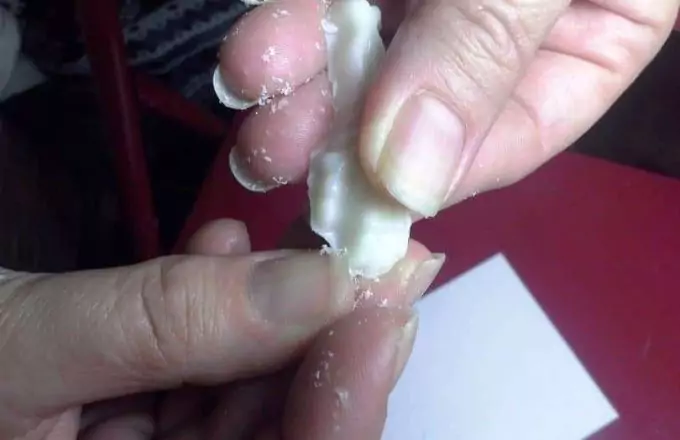
- First, add six ounces of soy wax to a pan.
- Then, add 1/2 a cup of isopropyl alcohol (70-99%).
- Stir them together until they are thoroughly combined.
- Next, pour the mixture into several cans (soup cans or pet food cans work best) and place a wick that touches the bottomof the cans.
- Finally, place them in the fridge overnight so that they can harden.
Calcium Acetate
This method is preferred to the soy wax recipe, as the fuel lasts longer. You can choose to purchase calcium acetate or make it yourself.

To make the calcium acetate, you’ll need calcium carbonate (chalk) and white vinegar (acetic acid).
- Combine four parts vinegar with one part chalk. Beware that the resulting smell will be like rotten eggs, so its’ best you do this in a well-ventilated area.
- Once the mixture has settled, you’ll have a solid left on the bottom and a liquid on top. The liquid is used to make the gel fuel.
- First, evaporate at least one-half to two-thirds of the water out of the solution by allowing it to sit in the sun or cooking it on a low fire. It can also be strained through a coffee filter or other porous material.
- Combine nine parts isopropyl alcohol with one part calcium acetate to make the gel fuel. Mix them until they gel, then pour the mixture into several cans.
- You want to add 1 part water for every three parts calcium acetate.
Here are two helpful videos to show you how to make gel fuel using calcium acetate:
Hand Sanitizer
If you want an even easier method to make gel fuel, use hand sanitizer. Hand sanitizer is high in alcohol and will burn well. Hand sanitizer is also relatively cheap, so it’s a good alternative if you can’t get your hands on the materials in other recipes.
Rubbing Alcohol, Vinegar, and Antacid
Instead of going out and buying materials, why not look in your cupboards? You may already have vinegar, rubbing alcohol, and antacids. These items can be used as substitutes for acetic acid and calcium carbonate.
Above is a helpful video detailing the process of making gel fuel out of these materials.
The Benefits of Gel Fuel
Gel fuel is a good replacement for firewood, especially if you want your fire to burn clean. The pros of gel fuel may convince you to try this fuel source inside or outside.
- A Green Fuel – It causes less harm to the environment. There are no harmful fumes for you to inhale, and it doesn’t leave residue on your containers or stoves. The ingredients in the fuel are also made from renewable products, so you’re not depleting natural resources.
- It is safe to use inside – Not all homes have fireplaces, but it is still nice to have a little extra warmth during the winter season. Gel fuel doesn’t require ventilation, so it’s safe to use within confined areas. In fact, it’s just as safe as burning a candle.
- Low maintenance fires – Gel fuel doesn’t create ash that needs to be cleaned up, and it will burn steadily for a long period of time. Wood fires typically require adding more wood and turning the logs over in order to get the maximum burn, but gel fire is self-sufficient.
- It is not messy – This makes gel fuel safe to use just about anywhere, as you don’t have to worry about your immediate surroundings catching on fire. If you’re camping in the woods, there’s very little chance of accidentally creating a forest fire.
- Lasts forever – Keep it away from heat, direct sunlight, and moisture, and you have a source of fuel that you can use whenever you need it.
- Cost-effective – The cost of getting materials to make your own gel fuel is outweighed by how much gel fuel can be created. You might already have the ingredients in your home!
- Portable Fires – These fires can be necessary if you’re moving around at night. A stationary fire can make it difficult for you to see the things around you, but if you have a gel fuel fire burning in a container, you can take it with you wherever you need to go.
- Easy to extinguish – Woodburning fires need to be covered with sand or dirt and doused with water to make sure that they’re really out. Gel fires simply require that you put a lid on the container. When you’re ready to use them, simply light the fuel again.
- Saves time. Starting wood fires can be difficult. Inclement weather can make fire-starting difficult, especially with damp or green wood. As long as gel fuel is stored properly, it will light.
The Disadvantages of Gel Fuel
Although gel fuel is a good fuel source, there are some things to consider when using it as a primary energy source.
There are negative aspects of gel fuel, but they are still outweighed by the positive benefits.
- Low heat output – The fire adds great ambiance, but it’s not going to produce a lot of heat. It may take a little longer to heat up a quick meal over the flame, but a warm dinner is better than a cold one.
- Gel fuel burns quickly – In order to keep a steady fire going, you’re going to need to refuel on a regular basis. One can-sized container will last about two to three hours.
- Water vapor – Water vapor is created as you burn the fuel, creating humidity.
- Explosion – There is some risk of explosion as seen in the diagram below.
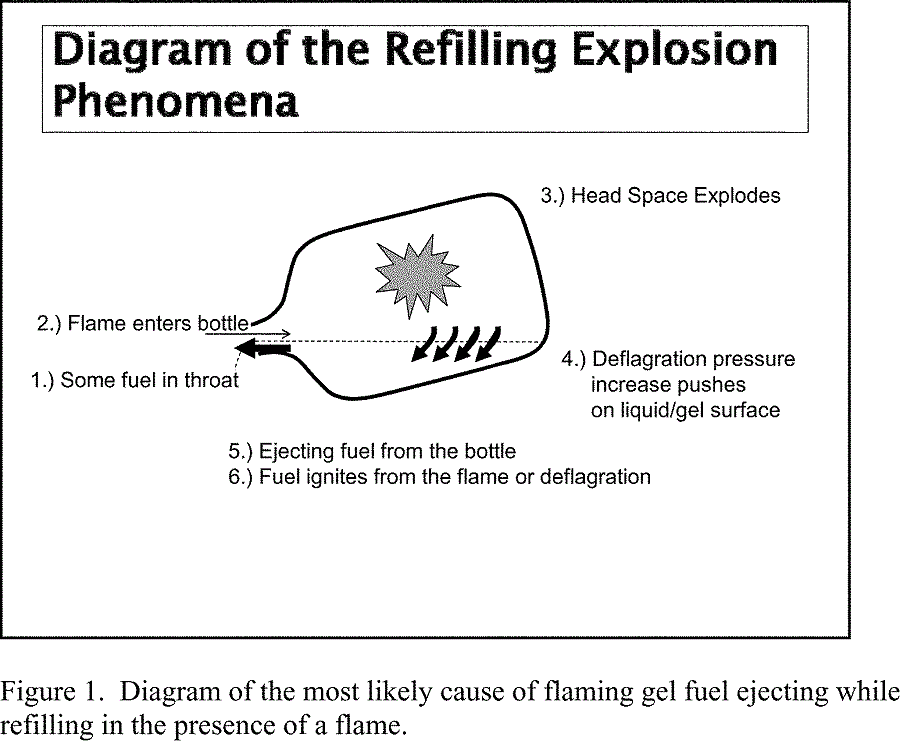
Final Thoughts
When you create gel fuel, you save money and ensure that you have a reliable source of fire outdoors.
Knowing how to create gel fuel can help you and your family stay safe during SHTF emergencies. Creating gel fuel is important if you want another method to develop sustainable fire for survival in emergencies.
As always, be cautious with any open flames. Just because it’s safer than other fuels doesn’t mean that you can be careless.
For more options, please read our article on making your biofuel.





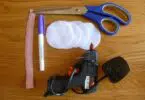
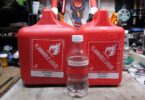
works best in my fire place and can keep you warm for about 2 to 3 hours! hassle free and crackle like real logs. These are great but maybe they can innovate though, i let it still for 20 minutes because it’s inducing strong scents upon opening.
Great article!
I had a bit of trouble when I tried to make some calcium-acetate for a gelling agent. Would lime (90 percent calcium-acetate) work?
Very informative. Is it possible to make a little gel fuel burner too? I would like to have something that lasts a while during long winter nights when I am camping. Fire tends to go down, and it can get quite chilly, even in a good sleeping bag.
The best you can do is burn off gel fuel in a can.
Thanks so much for this post!! It was awesome! Can I use calcium acetate, instead of the first step of mixing the calcium carbonate with the vinegar?
Yes, you can use calcium acetate when preparing gel fuel. Instead of buying calcium acetate from the store, you can make some. You will need isopropyl alcohol, vinegar, and crushed chalk.
Dear David,
May I ask if I also add sand to the gel fuel? Will it help to keep or increase heat? Because sand has a property to retain heat.
Thanks,
Jo
Sand is not added in any of the recipes listed here. Gel fuel needs a thickening agent and sand would not be ideal. I don’t know if it would retain heat or not since I’ve not tried using it.
I made this gel but it turns back to liquid and separates to a white liquid and clear liquid after a few hours. (Assuming calcium acetate and iso). The volumes are all correct, any idea what I have done wrong.
It solidifies solid, I can tip the jar upside down and nothing comes out, then a few hours later it’s all liquid again. I’ve sealed it up in a mason jar so it’s not taking on moisture or venting off alcihol. Really puzzled.
There are a few reasons this could happen.
Improper Gel Agent or Concentration: Gel fuels typically use a thickening agent like agar, gelatin, or fumed silica. If you don’t have the right proportions of gel agent to fuel, the mixture can become too thin, causing the gel to separate and revert back to liquid. Make sure you’re using the right kind of thickener in the correct amount.
Fuel Composition: Homemade gel fuels are usually made by mixing isopropyl alcohol or ethanol with a thickening agent and sometimes a stabilizer. If the alcohol concentration is too high, or if the mixture has too much water content, the gel can break down and liquefy. Some types of alcohol-based fuels can also evaporate over time, leading to separation.
Temperature and Storage Conditions: Temperature changes can cause the gel to soften and separate. Gel fuels tend to lose their structure when exposed to heat, especially if they are stored in a warm environment. If your gel fuel is kept in a spot that’s too hot or if it’s exposed to high temperatures for extended periods, the gel may break down and turn back into liquid form.
Separation of Layers: If you’re seeing clear and white layers, it’s possible that the gel is breaking down differently. The clear liquid may be the alcohol or fuel component separating from the thickened gel, and the white liquid could be residual gel agent (like agar) that has not fully dissolved or combined with the alcohol properly.